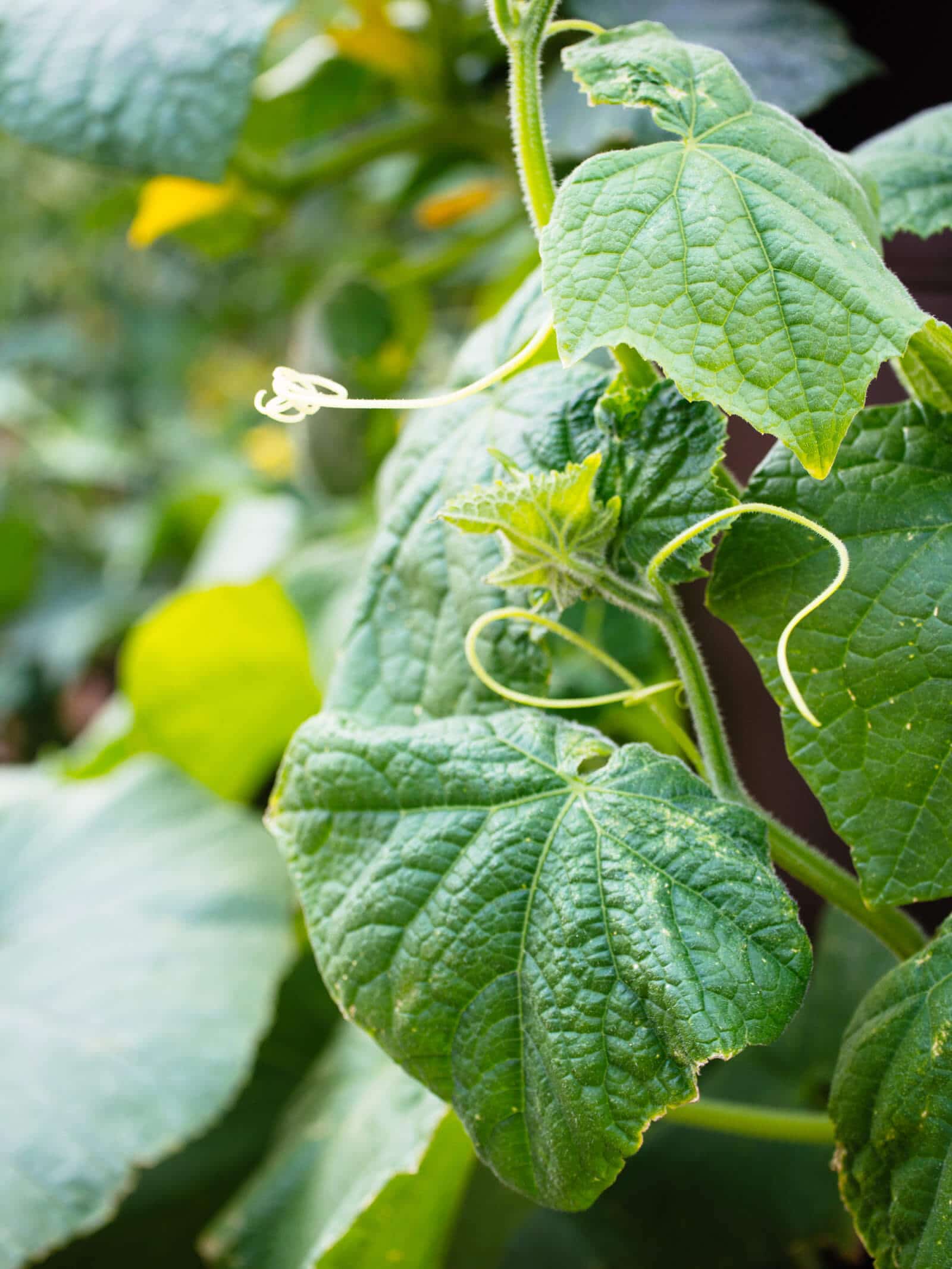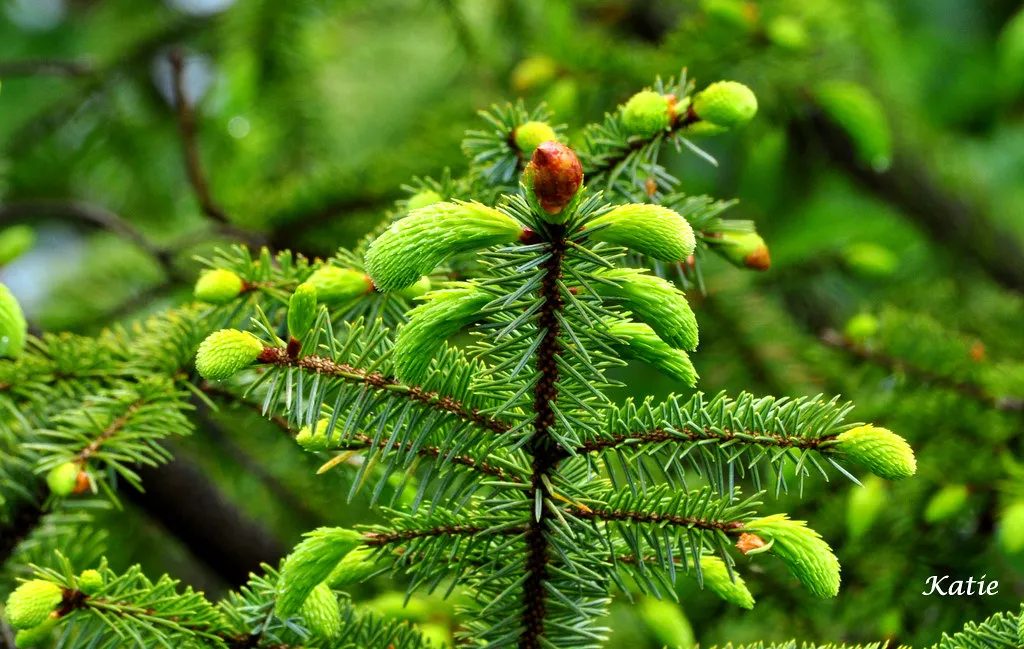Easy-Peasy Veggies: 11 Simple Crops to Grow highlights easy-to-grow vegetables. These crops are perfect for beginners and require minimal effort.
Growing your own vegetables can be incredibly rewarding. It saves money and ensures you have fresh produce at your fingertips. Some vegetables are easier to grow than others, making them perfect for novice gardeners. This article will highlight 11 simple crops that almost anyone can grow.
These vegetables require minimal care and thrive in various conditions. Whether you have a large backyard or a small balcony, these easy-peasy veggies will fit your gardening space. Start your gardening journey with these simple crops and enjoy fresh, homegrown vegetables in no time.

Credit: gardenbetty.com
Introduction To Beginner Gardening
Starting your own garden is a fun and rewarding experience. Growing your own veggies can bring joy and healthy food to your table. Even if you are new to gardening, you can succeed with simple crops.
Benefits Of Growing Your Own Veggies
There are many reasons to grow your own vegetables. Here are some of the key benefits:
- Freshness: Homegrown veggies are fresher and taste better.
- Health: They are healthier because you control what goes on them.
- Cost-effective: Growing veggies can save you money on groceries.
- Environment: It reduces your carbon footprint.
- Enjoyment: Gardening is a fun and relaxing hobby.
Getting Started With Simple Crops
Beginner gardeners should start with easy-to-grow crops. Here are 11 simple veggies to consider:
| Vegetable | Best Planting Season | Growing Tips |
|---|---|---|
| Tomatoes | Spring | Needs lots of sunlight and water. |
| Carrots | Spring, Fall | Prefers loose, sandy soil. |
| Lettuce | Spring, Fall | Grows best in cool weather. |
| Zucchini | Summer | Requires full sun and space to spread. |
| Radishes | Spring, Fall | Quick-growing, ready in about 30 days. |
| Green Beans | Summer | Needs a trellis or support to climb. |
| Peas | Spring | Thrives in cool, moist conditions. |
| Spinach | Spring, Fall | Prefers partial shade in hot climates. |
| Beets | Spring, Fall | Grows well in most soil types. |
| Bell Peppers | Summer | Needs warm soil and regular watering. |
| Cucumbers | Summer | Requires a lot of water and full sun. |

Credit: www.amazon.com
Tomatoes
Tomatoes are a favorite crop for many home gardeners. They are easy to grow and very rewarding. Fresh, homegrown tomatoes taste delicious and are packed with nutrients. Whether you have a large garden or a small balcony, you can grow tomatoes. Let’s explore some tips for beginners.
Varieties For Beginners
Choosing the right variety is crucial for success. Here are some easy options:
- Cherry Tomatoes: These small, sweet tomatoes grow quickly.
- Roma Tomatoes: Great for sauces and easy to care for.
- Beefsteak Tomatoes: Large and juicy, perfect for sandwiches.
Basic Care Tips
Tomatoes need sunlight, water, and support. Follow these basic tips:
- Sunlight: Plant in a spot that gets 6-8 hours of sun daily.
- Watering: Water deeply but avoid getting leaves wet.
- Support: Use cages or stakes to support the plants.
- Soil: Use well-draining soil with compost.
Here is a simple table summarizing the care tips:
| Aspect | Details |
|---|---|
| Sunlight | 6-8 hours of sun daily |
| Watering | Deep watering, avoid wet leaves |
| Support | Use cages or stakes |
| Soil | Well-draining with compost |
With the right care, even beginners can grow delicious tomatoes. Happy gardening!
Lettuce
Lettuce is one of the easiest vegetables to grow in your garden. This leafy green is perfect for beginners and adds fresh crunch to your salads.
Quick Growing Tips
- Sow seeds directly into the soil for best results.
- Water regularly to keep the soil moist, not soggy.
- Thin seedlings to prevent overcrowding and ensure healthy growth.
- Harvest leaves when they are young and tender for best flavor.
Ideal Conditions
| Factor | Optimal Condition |
|---|---|
| Soil | Well-drained, rich in organic matter |
| Sunlight | Full sun to partial shade |
| Temperature | Cool weather, 60-70°F (15-21°C) |
| Watering | Consistent, even moisture |
By following these tips, you can enjoy fresh, home-grown lettuce in no time. Growing lettuce is a rewarding experience for gardeners of all levels.
Radishes
Radishes are a fantastic crop for beginners. They grow quickly and need little care. These crunchy, colorful vegetables can be a great addition to your garden.
Planting Guidelines
Radishes thrive in cool weather. Early spring and fall are ideal planting times. Sow seeds directly into the soil. Plant them 1/2 inch deep and 1 inch apart. Keep the rows 12 inches apart for ample space.
Radishes need well-drained soil. Ensure the soil is loose and free of rocks. This helps the roots grow straight. Water them consistently. Don’t let the soil dry out completely.
Harvesting Tips
Radishes mature quickly. Most varieties are ready in 3 to 4 weeks. Harvest them when they are about 1 inch in diameter.
Check your radishes often. Overgrown radishes become woody and lose flavor. Pull them gently from the ground. Wash off the dirt and enjoy their fresh taste.
Carrots
Carrots are vibrant and nutritious root vegetables that are easy to grow. They thrive in various climates and offer a rich source of vitamins. Growing carrots in your garden can be a rewarding experience.
Soil Preparation
Proper soil preparation is key for healthy carrot growth. Carrots prefer loose, well-drained soil with a pH between 6.0 and 6.8. Ensure the soil is free from rocks and debris as these can cause carrots to grow in odd shapes.
To prepare the soil, follow these steps:
- Loosen the soil to a depth of 12 inches using a garden fork.
- Mix in well-rotted compost to enrich the soil.
- Rake the soil surface to create a fine, even texture.
Carrots grow best in raised beds or deep containers. This allows better root development.
Maintenance Tips
Maintaining your carrot crop ensures a bountiful harvest. Here are some tips:
- Watering: Keep the soil consistently moist but not waterlogged. Water deeply once a week.
- Weeding: Remove weeds regularly to prevent competition for nutrients.
- Thinning: Thin seedlings to 2-3 inches apart to give them room to grow.
Avoid using high-nitrogen fertilizers. Too much nitrogen can lead to forked or hairy roots.
Protect your carrots from pests like carrot flies. Use row covers or plant companion plants like onions.
Green Beans
Green beans are a fantastic choice for new gardeners. They grow quickly and need little care. Green beans are packed with vitamins and minerals. They are delicious and versatile in many recipes.
Types To Try
There are several types of green beans you can grow. Here are some popular ones:
- Blue Lake: Known for its stringless pods.
- Provider: Great for early harvests.
- Contender: Resistant to many diseases.
- Kentucky Wonder: An heirloom variety with great taste.
- French Filet: Known for its thin, tender pods.
Simple Growing Instructions
Follow these easy steps to grow your green beans:
- Choose a sunny spot in your garden.
- Plant seeds 1 inch deep and 2 inches apart.
- Water the seeds well after planting.
- Keep the soil moist but not soggy.
- Expect sprouts within 7 to 10 days.
- Watch for pests and remove them by hand.
- Harvest when pods are firm and crisp.
Green beans are a rewarding crop for beginners. They grow fast and need little care. Enjoy fresh, home-grown beans in your meals!
Zucchini
Zucchini is a versatile, easy-to-grow vegetable. Known for its rapid growth, it’s perfect for beginners. With a little care, you can enjoy a bountiful harvest.
Planting And Care
Plant zucchini seeds directly in the soil. Ensure the soil is well-drained and rich in organic matter. Zucchini loves sunlight, so choose a sunny spot in your garden.
Water the plants regularly. Keep the soil moist but not waterlogged. Mulching helps retain moisture and control weeds. Thin out the seedlings, leaving the strongest to grow.
Fertilize the plants every few weeks. Use a balanced fertilizer to promote healthy growth. Regularly check for pests and diseases.
Common Issues
Powdery mildew: This white fungus appears on leaves. Keep the plants well-spaced for air circulation. Use a fungicide if needed.
Blossom end rot: This condition causes the fruit to rot. Ensure consistent watering and add calcium to the soil.
Squash bugs: These pests suck sap from the plants. Use insecticidal soap to control them.
Cucumber beetles: These beetles spread diseases. Use row covers to protect the plants.
Table of Common Issues and Solutions:
| Issue | Solution |
|---|---|
| Powdery mildew | Use fungicide and improve air circulation |
| Blossom end rot | Ensure consistent watering and add calcium |
| Squash bugs | Use insecticidal soap |
| Cucumber beetles | Use row covers |
Spinach
Spinach is a versatile and nutritious leafy green. It grows quickly and thrives in various climates. Even beginners can cultivate this superfood with ease. Let’s dive into the essentials for growing and harvesting spinach.
Growing Conditions
Spinach prefers cool weather and partial shade. The ideal soil pH is between 6.0 and 7.5. Ensure the soil is well-drained and rich in organic matter.
| Condition | Requirement |
|---|---|
| Soil pH | 6.0 – 7.5 |
| Light | Partial Shade |
| Temperature | 35°F – 75°F |
Water the plants consistently, keeping the soil moist but not waterlogged. Mulch can help retain moisture and keep the roots cool.
Harvesting Techniques
Harvesting spinach is simple. Use scissors to cut the outer leaves first. Leave the inner leaves to continue growing.
- Wait until the leaves are at least 4 inches long.
- Use clean scissors to cut the outer leaves.
- Harvest in the morning for the best flavor.
Spinach can be harvested multiple times. The plant will keep producing new leaves. This makes it a great choice for continuous fresh greens.
Cucumbers
Cucumbers are a favorite in many gardens. They are versatile and refreshing. Perfect for summer salads or pickling, cucumbers are a must-have. Let’s dive into how to grow them successfully.
Starting From Seeds
Begin by choosing the right seeds. Opt for organic cucumber seeds for the best results. Sow seeds indoors 3-4 weeks before the last frost. Plant them 1 inch deep in small pots.
Maintain a temperature of 70-75°F for optimal germination. Keep the soil moist but not waterlogged. Use a seedling heat mat if needed.
| Step | Details |
|---|---|
| 1 | Choose organic seeds |
| 2 | Sow seeds 1 inch deep |
| 3 | Keep soil moist |
| 4 | Maintain 70-75°F temperature |
Caring For Your Plants
Transplant seedlings outdoors after the danger of frost has passed. Choose a sunny spot with well-draining soil. Space plants 12-18 inches apart.
Water regularly, keeping soil consistently moist. Mulch around the plants to retain moisture and suppress weeds. Consider using a trellis to support the vines.
- Sunny location
- Well-draining soil
- Space plants 12-18 inches apart
- Regular watering
- Mulch for moisture retention
- Use a trellis for support
Watch for pests like cucumber beetles. Use organic pest control methods if needed. Harvest cucumbers when they are firm and green.
- Monitor for pests
- Use organic pest control
- Harvest when firm and green

Credit: www.kare11.com
Peas
Peas are among the easiest vegetables to grow in your garden. These sweet, green gems thrive in cool weather and require minimal maintenance. Whether you have a large yard or a small balcony, peas can be a delightful addition to your gardening repertoire.
Planting Guide
Peas prefer well-drained soil with a neutral pH. Here’s a simple planting guide:
- Soil Preparation: Loosen the soil to a depth of 8 inches.
- Planting Time: Early spring or late fall.
- Spacing: Plant seeds 1 inch deep and 2 inches apart.
- Watering: Keep soil moist, but not waterlogged.
Support Structures
Peas need support to grow well. Without support, they may not produce as many pods.
Here are some easy support structures you can use:
| Structure | Description |
|---|---|
| Trellis | A frame made of wood or metal. Attach strings or wire mesh for peas to climb. |
| Netting | Plastic or nylon netting stretched between stakes. Simple and effective. |
| Tepee | Three or more poles tied together at the top. Peas can climb around the poles. |
Using these structures helps your peas reach their full potential. They also make harvesting easier.
Bell Peppers
Bell peppers, also known as sweet peppers, are an easy and rewarding crop to grow in your garden. They come in vibrant colors like red, yellow, and green, and are packed with vitamins and antioxidants. Growing bell peppers can be a fun project for beginners and experienced gardeners alike.
Choosing The Right Variety
Choosing the right bell pepper variety is essential for a successful harvest. Some varieties are more suitable for different climates and growing conditions.
- California Wonder: A classic choice, ideal for most climates.
- Bell Boy: Perfect for cooler areas, resistant to diseases.
- Gypsy: Fast-growing, great for short growing seasons.
- King Arthur: High-yield, great for warmer climates.
| Variety | Best Climate | Special Features |
|---|---|---|
| California Wonder | Moderate | Classic, versatile |
| Bell Boy | Cooler | Disease-resistant |
| Gypsy | Short Seasons | Fast-growing |
| King Arthur | Warmer | High-yield |
Growing And Harvesting
Plant bell pepper seeds indoors 8-10 weeks before the last frost date. Use a seed-starting mix and keep the soil moist. Transplant the seedlings outdoors after the last frost.
- Choose a sunny spot in your garden.
- Ensure well-draining soil, enriched with compost.
- Space plants 18-24 inches apart.
- Water regularly, keeping the soil moist but not soggy.
Bell peppers are ready to harvest in about 60-90 days. Pick the peppers when they are firm and vibrant in color. Use scissors or a sharp knife to cut the peppers from the plant. This prevents damage to the plant.
Growing bell peppers can be easy and rewarding. Follow these simple steps for a bountiful harvest.
Herbs For Beginners
Starting a garden can feel overwhelming. But herbs are a great place to start. They are easy to grow and maintain. Here, we will discuss two beginner-friendly herbs: basil and parsley.
Basil
Basil is a popular herb. It thrives in warm weather. Basil needs lots of sunlight and well-drained soil. You can grow basil in pots or directly in the garden. Water it regularly, but do not overwater.
Basil is versatile in the kitchen. Use it in salads, pasta, and more. Fresh basil adds flavor and aroma to dishes. Pruning basil encourages growth. Pinch off flowers to keep the plant healthy.
| Growing Requirements | Details |
|---|---|
| Sunlight | 6-8 hours of direct sunlight |
| Soil | Well-drained, rich in organic matter |
| Water | Regularly, but avoid waterlogging |
Parsley
Parsley is another easy herb. It grows well in both sunny and partially shaded areas. Parsley prefers moist, well-drained soil. It can be grown in pots or in the ground.
Parsley is a biennial plant. It produces leaves in the first year and flowers in the second. Harvest parsley regularly to promote new growth.
Use parsley as a garnish or in cooking. It adds a fresh, vibrant flavor to dishes. Parsley is also rich in vitamins and minerals.
| Growing Requirements | Details |
|---|---|
| Sunlight | 4-6 hours of sunlight |
| Soil | Moist, well-drained |
| Water | Keep soil consistently moist |
Frequently Asked Questions
What Are Easy Vegetables To Grow At Home?
Growing vegetables like tomatoes, lettuce, and radishes is simple. They require minimal care and grow quickly. Perfect for beginners!
How Long Do These Veggies Take To Grow?
Most easy vegetables take between 30 to 60 days to mature. Fast-growing options include lettuce and radishes.
Can I Grow These Veggies In Containers?
Yes, many easy vegetables grow well in containers. Tomatoes, lettuce, and peppers are excellent choices for container gardening.
What Soil Type Is Best For These Vegetables?
Loamy, well-draining soil is ideal for these vegetables. Ensure the soil is rich in organic matter for better growth.
Conclusion
Growing your own vegetables is easier than you think. Choose any of these 11 simple crops to start. You’ll enjoy fresh, healthy produce right from your garden. Plus, gardening is a rewarding and relaxing activity. Try it now and reap the benefits of home-grown veggies.
Happy gardening!



